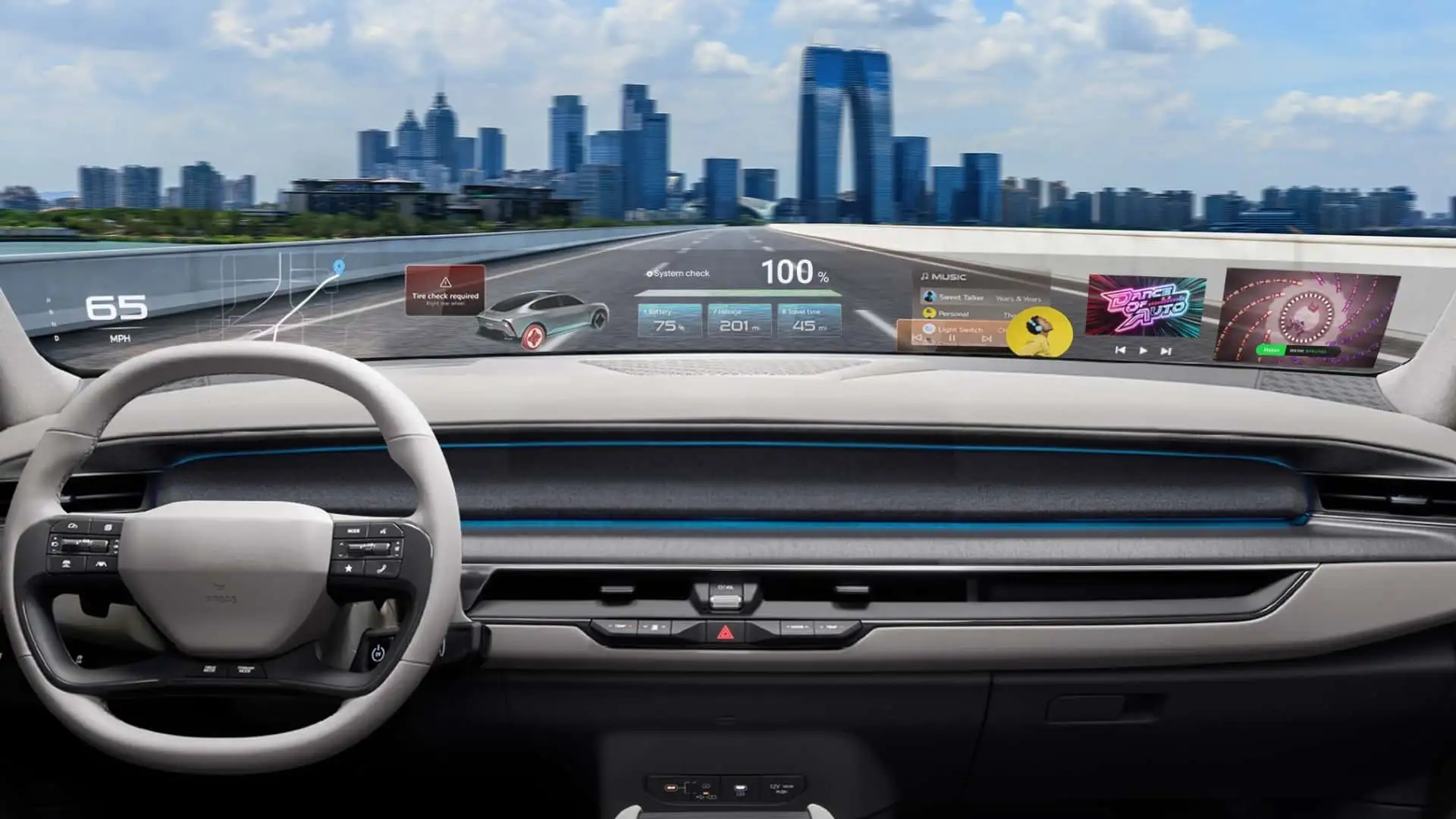October 3, 2024, Seoul, South Korea – Hyundai’s high-tech parts division, Hyundai Mobis, has teamed up with German optical company Zeiss to develop a holographic windshield display. This partnership aims to create a new approach to in-car displays, moving away from the dominance of touchscreens. While touchscreens have become a standard in vehicles due to their cost-effectiveness and ability to control complex features, studies continue to show that relying too heavily on a central screen can be unsafe and contribute to screen fatigue.
Hyundai Mobis and Zeiss envision a future where the entire windshield becomes a display, going far beyond the traditional heads-up display (HUD) that has been in use since the 1980s. Instead of only showing basic information like speed and navigation, their new system could handle menus, entertainment, audio controls, videos, and even games. The concept image they provided, which looks similar to the interior of the Kia EV9, eliminates central and driver-facing screens, making the windshield the main display.

The technology would allow navigation and driving information to unfold across the windshield in front of the driver’s eyes, while passengers could use the same glass to watch movies or take video calls. The display is powered by an ultra-thin transparent film capable of showing holograms, with a projector mounted elsewhere in the vehicle. Mobis officials emphasized that the display is designed to be non-intrusive and would not distract the driver. Passengers and drivers would see different content, allowing for entertainment without compromising safety.
Another key advantage of this innovation is the potential to redesign vehicle interiors, eliminating the need for bulky dashboard displays. This could create a more open, unobstructed feel inside the car without affecting visibility for the driver or passengers.

Although it’s still unclear how the holographic display will be operated, industry speculation suggests that voice and gesture controls will likely be the primary interface. This aligns with what other automakers, such as BMW, are exploring with their future concepts. Voice controls have become more sophisticated in recent years and could prove to be a safer way to interact with a vehicle’s features without distracting the driver.
Hyundai Mobis and Zeiss plan to introduce this technology as early as 2027, with prototypes already in development. Whether this holographic display will be a safer alternative to touchscreens will depend on the effectiveness of the control interface and how well it can reduce distractions while driving.

